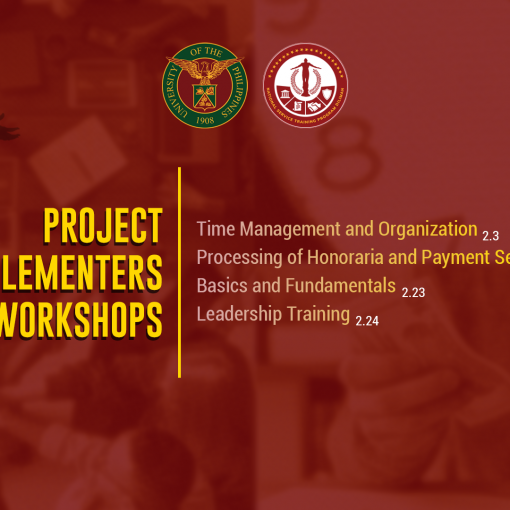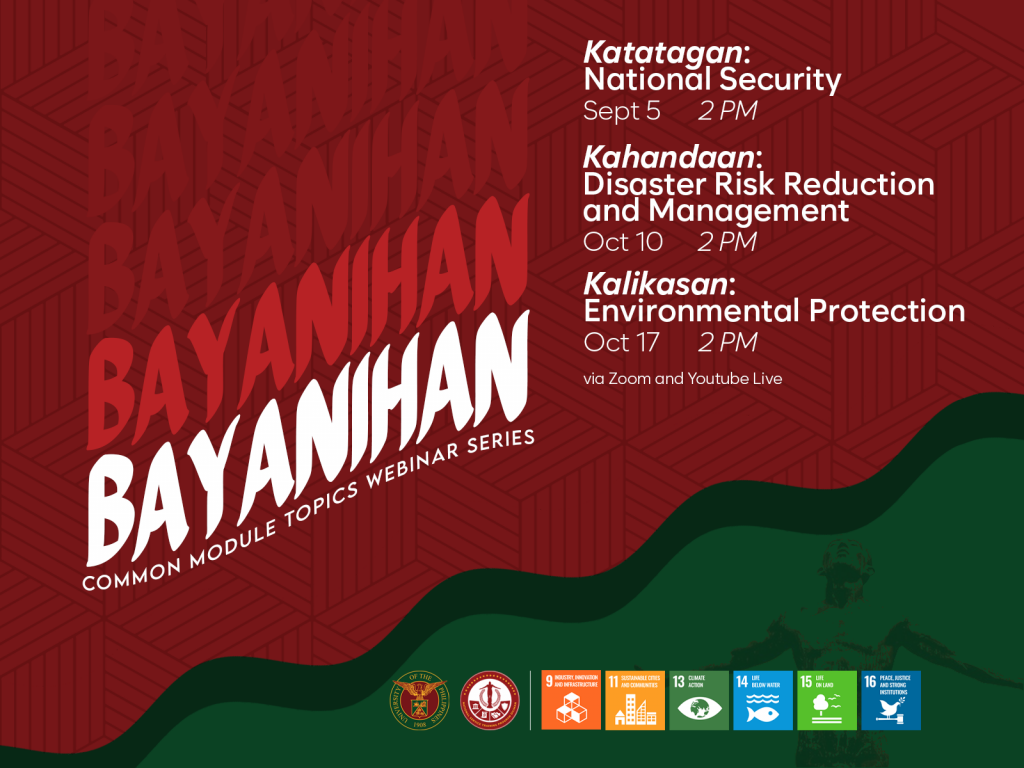
Amid the national exigencies plaguing the country — from disaster risk management issues, peace talk qualms, to environmental woes — the National Service Training Program (NSTP) – UP Diliman Office found a way to address these concerns by responding with an educational webinar series.
From September to October 2022, the “BAYANIHAN: Common Module Webinar Series,” a three-part webinar series by the NSTP Diliman Office, featured reputable figures, and also highlighted women in STEM, in the discussion regarding national security issues, disaster risk reduction, and environmental protection in the Philippines.
“Katatagan”
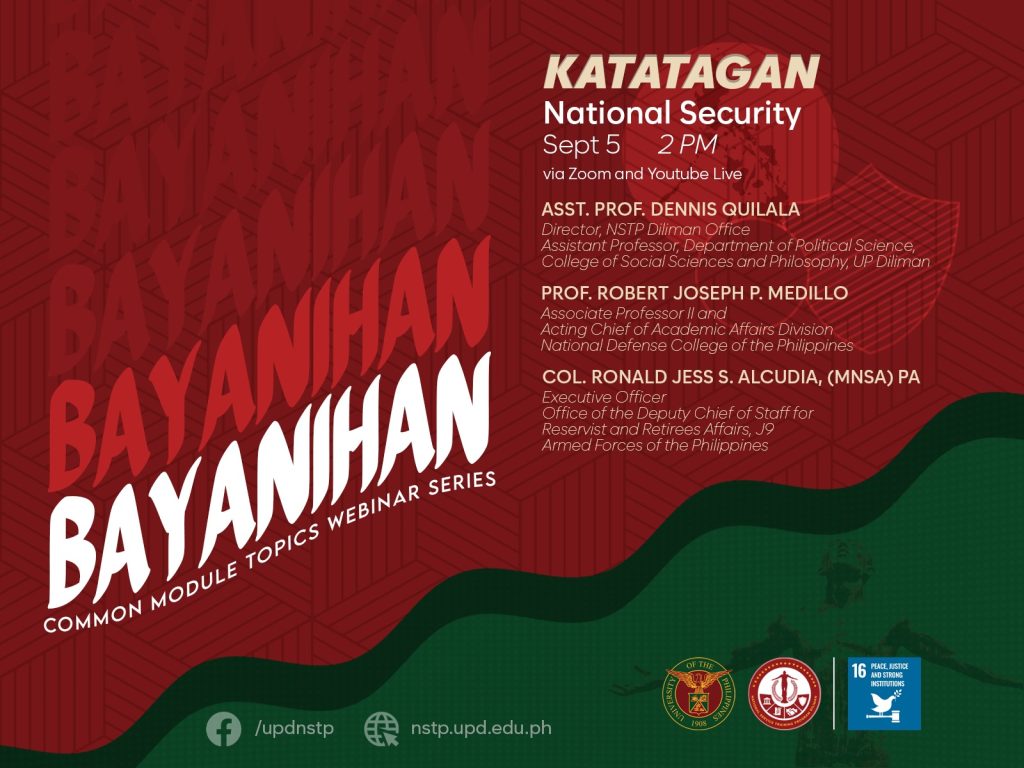
“Katatagan: National Security,” marked the first leg of the webinar series. The webinar gave an overview of the country’s current security environment, from the national (e.g., West Philippine sea issue) to the global scale (e.g., Ukraine-Russia crisis).
Prof. Robert Joseph P. Medillo, Associate Professor II and Acting Chief of Academic Affairs Division of the National Defense College of the Philippines, oriented the webinar attendees with the basics of national security and the pressing issues that the country is facing. In discussing a part of his talk regarding the country’s territorial claims and maritime domain issues, Medillo exclaimed: “The Philippines must ensure good order within its sea boundaries and develop appropriate maritime domain awareness and response force capability.”
Meanwhile, Col. Ronald Jess Alcudia, Executive Officer of the Office of the Deputy Chief of Staff for Reservist and Retirees Affairs, J9 of the Armed Forces of the Philippines (AFP), focused on discussing the internal security situation in the Philippines. To supplement the presented ideas, Assistant Professor Dennis F. Quilala, the Director of the NSTP Diliman Office, tied the conception of the office’s learning materials with the concern regarding national security. His talk, entitled, “NSTP, Human Security, and National Security,” tackled the development of the NSTP Diliman Common Module, in consideration of various security agendas and issues.
“Kahandaan”
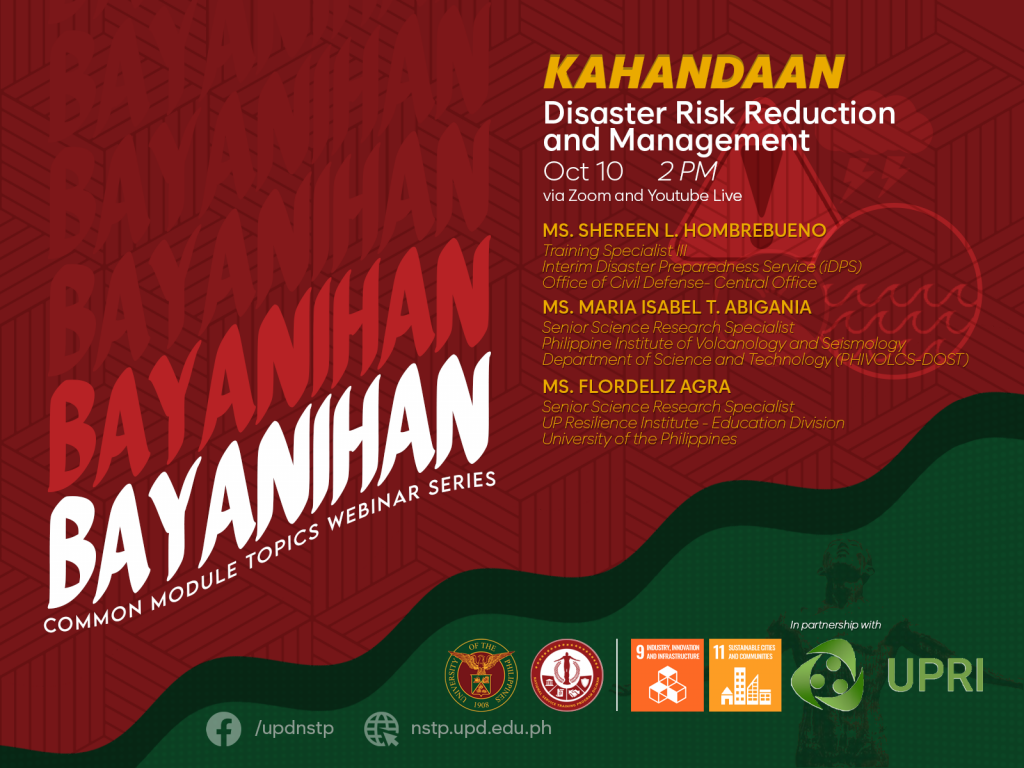
Just weeks before a 6.4 magnitude earthquake rocked the Philippines in late October, “Kahandaan: Disaster Risk Reduction and Management” sequelled the BAYANIHAN webinar series. Last October 10, an all-women panel spearheaded the discussion regarding volcanic and seismic hazards, disaster risk management, and the empowerment of communities amid disaster.
The functions of the National Service Service Reserve Corps (NSRC) was discussed by Ms. Shereen L. Hombrebueno, Training Specialist III of the Interim Disaster Preparedness Service (IDPS) of the Office of Civil Defense – Central Office, in the midst of disaster mitigation and the implementation of rehabilitation programs. The prescribed civic welfare and mobilization activities to further enhance the corps’ units for disaster response were also highlighted.
Attendees were also equipped with an in-depth knowledge on Philippine hazardscape by Ms. Maria Isabel T. Abigania, the Senior Science Research Specialist of the Philippine Institute of Volcanology and Seismology – Department of Science and Technology (PHIVOLCS-DOST). In helping the general public identify the nearest active fault in the Philippines, Ms. Abigania introduced “The PHIVOLCS FaultFinder,” an application available on the web, on the App Store, and on Google Play. Other types of hazard in the country, on the other hand, may also be identified through the HazardHunter PH site according to the research specialist.
The science behind these hazards were also enriched by the study of Ms. Flordeliz A. Agra, Senior Science Research Specialist of the UP Resilience Institute – Education Division, on the participation of youth and students in disaster risk reduction management (DRRM). In preventing and mitigating disasters, Ms. Agra emphasized the importance of building partnerships among sectors and agencies.
“Kalikasan”
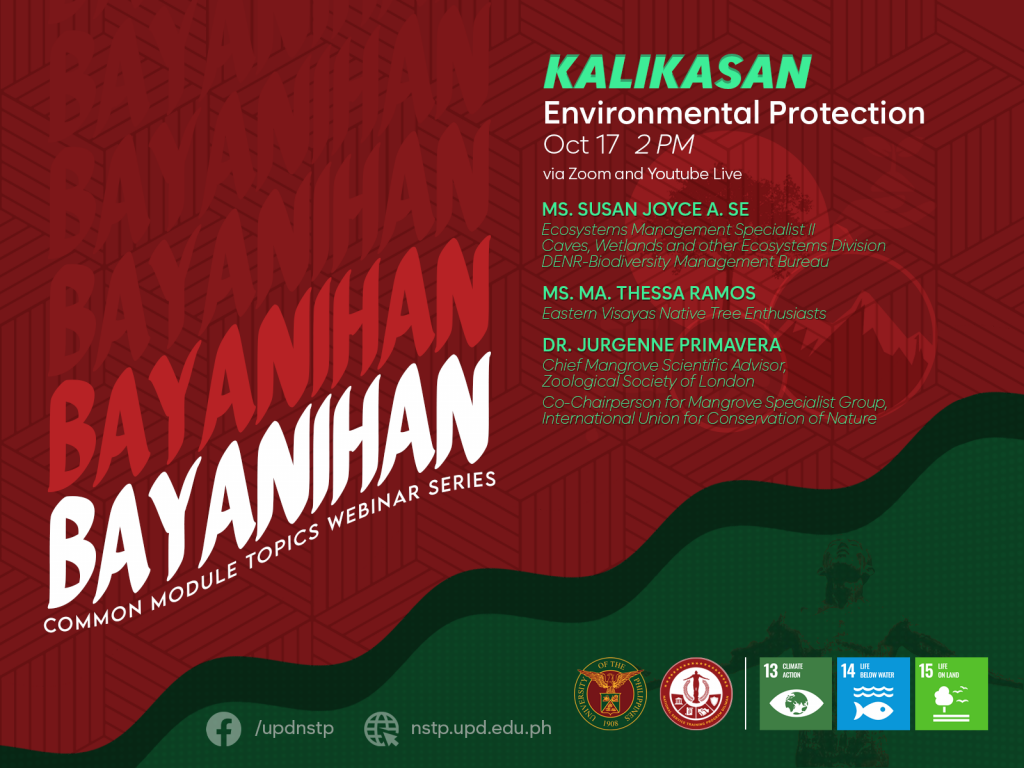
On October 17, the three-part BAYANIHAN webinar series concluded with the women-led, “Kalikasan: Environmental Protection.”
Ms. Susan Joyce A. Se, Ecosystems Management Specialist II of the DENR-Biodiversity Management Bureau, ingressed the webinar with her talk regarding the challenges faced by and the initiatives made for the Philippine biodiversity. In the bureau’s fight for the sustainability of the country’s biodiversity, Se highlighted major programs such as the “Protected Area Development and Management,” or the protection of certain areas to protect biodiversity; “Protection and Conservation of Wildlife,” or the restoration of wildlife habitats; and the “Management of Coastal and Marine Resources/Areas,” which also deals with the maintenance of mangroves and the quality of coastal areas.
On the other hand, Ms. Ma. Thessa Ramos, Eastern Visayas Native Tree Enthusiast, discussed how native trees can heal the planet and build a sense of community. Aside from being highly adaptive to our climate, according to Ramos, the planting of endemic trees is key in the propagation of Philippine biodiversity.
The webinar ended with the talk of Dr. Jurgenne Primavera, Chief Mangrove Scientific Advisor of the Zoological Society of London, regarding the transformation of plastic from “blessing to blight.” With the Pasig river topping the list of rivers contributing to global plastic problems in oceans, Primavera explained how microplastics invade our bodies of water, and how it affects the food web. Aside from the call to segregate and reuse plastic materials, the scientific advisor also re-echoed the need to review our laws regarding the reduction and regulation of plastic content in the country.
By Rocky Bernido



